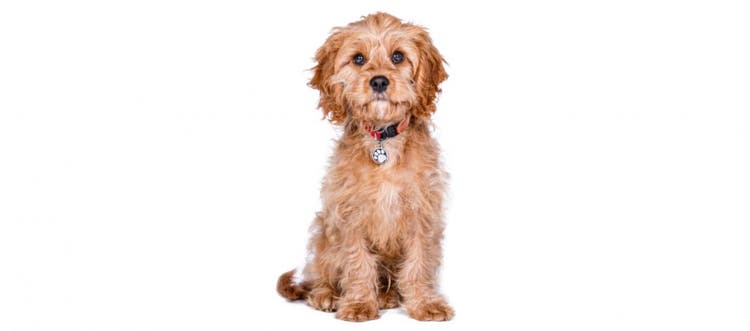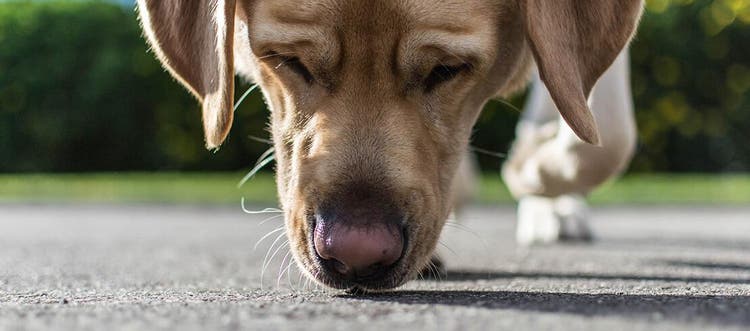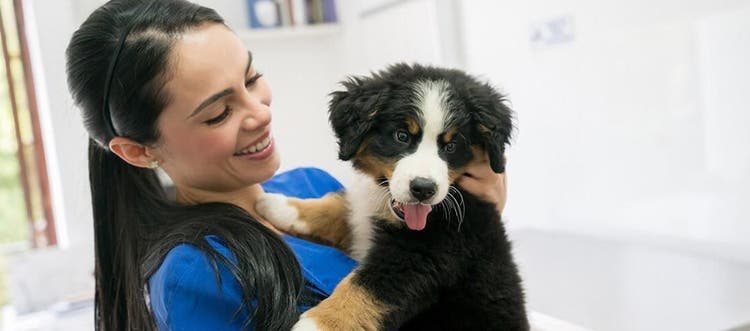Reviewed by Dr Abbie Lam DVM
Fun loving, affectionate and obedient, Labradors and Golden Retrievers rank highly as favourite dog breeds. They’re both friendly, energetic and fun, but which one is right for you? Discover the traits, temperament and talents of the Labrador and the Golden Retriever.
Physical characteristics
Appearance
You may not be able to base your decision on appearance alone, because at a glance Labs and Golden Retrievers have a lot in common. They’re both retriever breeds with folded ears, webbed feet, long tails and an affinity for water.
Both breeds also have water-resistant coats. A Golden Retriever’s coat is wavy and much longer than the shorter-haired Labrador’s, meaning that it benefits from slightly more grooming (every 2-3 days). Normal weekly brushing is a must for both breeds. In times of peak shedding, such as during seasonal changes, that frequency may increase. If you're looking for a non-shedding dog, check out our guide to dog breeds that don't shed.
Both breeds also have notably soft mouths. This trait allows them to carry things undamaged, which makes them ideal for hunting and retrieving.
However, despite these similarities, a good way to distinguish Golden Retrievers from Labradors is by looking at these dogs’ profiles and general body shapes. Golden Retrievers have longer snouts, while Labs have broader heads and more muscular builds.
Size and colour
Both breeds are large dogs and are similar in size and weight, but Labs are slightly larger overall. Males are slightly larger than females across both breeds.
Labradors weigh 25 to 36 kg on average, with females in the 25 to 32 kg range. They are typically 56 to 62 cm tall at the shoulder, with females on the shorter end of that range.
Golden Retrievers weigh 25 to 34 kg on average, with females in the 25 to 29 kg range. They are typically 56 to 61 cm tall at the shoulder, with females on the shorter end of that range.
Labradors come in three colours: yellow, chocolate and black; while Golden Retrievers come in warmer hues ranging from yellow to rust red.
Temperament and traits
Both breeds are intelligent and real people-pleasers, which is a plus for owners everywhere since this makes them easily trained and equally affectionate. Wanting nothing more than to be loved, Labradors and Goldens are both friendly and excitable when they see their owners, as well as good-natured and gentle with children and other animals. Labradors and Goldens are popular choices as therapy dogs due to their calm and loyal demeanours.
Personality
Both of these sporting dogs tend to have a lot of energy and a need for attention. Whichever breed you decide is best for you and your family, be sure to provide them with plenty of room to run and play – both inside and outside – and be ready to get active with them with a good game of fetch or even a swim. They require at least one hour of exercise a day. Their need for space and exploration means that apartments may be challenging environments.
If you’re planning to leave your pet alone for long periods of time, you should consider different breeds. Neither Labradors nor Golden Retrievers particularly enjoy alone time or being crated for hours on end. In fact, both are prone to separation anxiety or chewing if they’re not kept engaged with toys, activities and playtime, so for the sake of your shoes, give these dogs the time and attention they desire.
Health and care
Healthy Goldens and Labradors usually live 10 to 12 years and are perfectly suited for an active family lifestyle.
There are a few health concerns to be aware of for both breeds. Labradors and Goldens are susceptible to hip and elbow dysplasia and progressive retinal atrophy (gradual vision loss). Goldens and Labradors are prone to obesity and arthritis, so it is important to maintain a consistent diet and exercise routine to avoid excessive weight gain to reduce stress on joints.
Both Labradors and Golden Retrievers are happy and enthusiastic sporting animals that are loyal to their owners and great with kids. While each breed has particular traits that will appeal to certain families and lifestyles, one thing’s for certain: you can’t go wrong, no matter which of these breeds you choose.
References
Smith GK, Mayhew PD, Kapatkin AS, McKelvie PJ, Shofer FS, Gregor TP. Evaluation of risk factors for degenerative joint disease associated with hip dysplasia in German Shepherd Dogs, Golden Retrievers, Labrador Retrievers, and Rottweilers. Journal of the American Veterinary Medical Association. 2001 Dec 15;219(12):1719-24.






